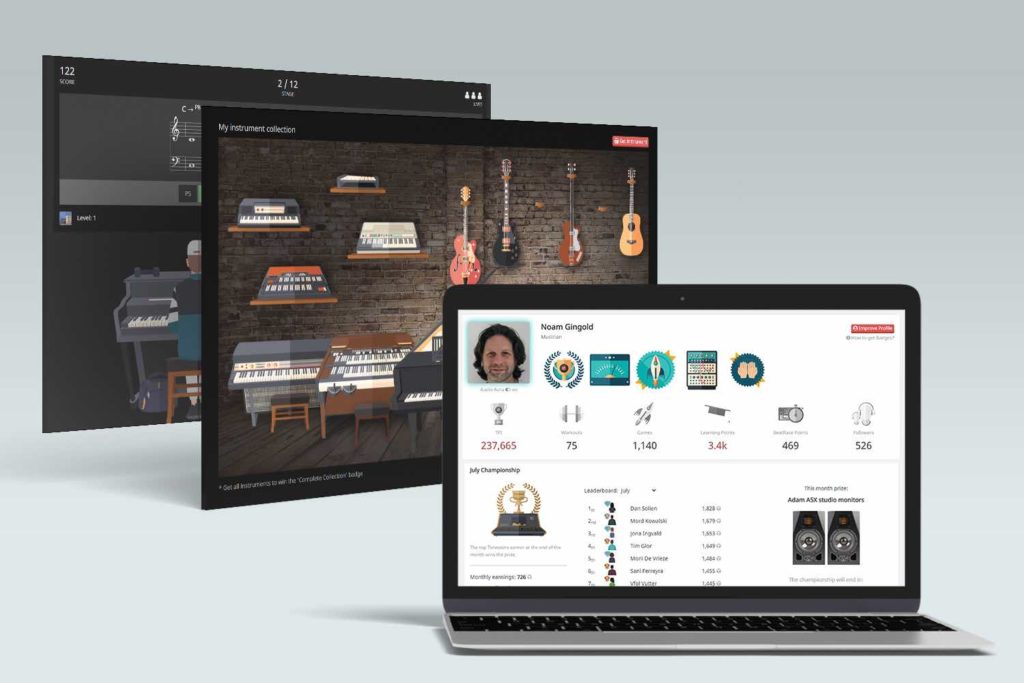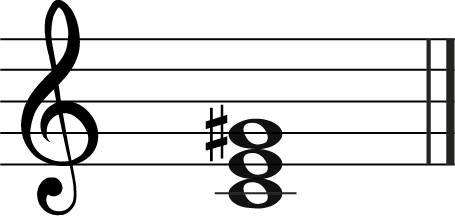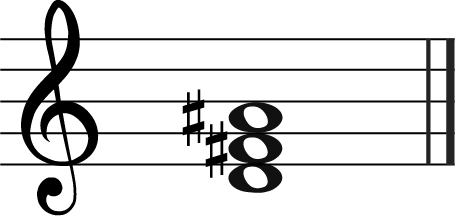A whole tone scale is a scale that comprises of six notes and moves in whole steps. We sometimes refer to a whole tone scale as a hexatonic scale, hexatonic simply meaning a scale with only six notes! A whole tone scale is also referred to as a symmetrical scale in music theory, meaning it is the same on the way up as it is on the way down.
A whole tone scale is not a diatonic scale as it is made up of only six tones. To be a diatonic scale you need to have seven notes comprising of five whole tones and two semitones. The two main diatonic scales are the major scale and the natural minor scale.
ToneGym- The Ultimate Ear Training App
ToneGym allows you to improve your ear with a range of games, interactive and competitions.
Or check out our complete review of ToneGym.

How do I build a whole tone scale?
A whole tone scale is built simply using whole step intervals or whole tones. There are no half step intervals (semitone intervals). The wholetone scale is the exact opposite of the chromatic scale which uses a pattern of half steps (semitones).
Whole tone scales have the exact same interval between each note and the formula for this is:
Whole step, WS, WS, WS, WS, WS
or
Tone, T, T, T, T, T
Struggling with these intervals, we have a guide to the main type or intervals and how to work them out.
How many whole tone scales are there?
There are only two unique whole tone scales and these are the C whole tone scale and the Db whole tone scale, unlike your major and minor scales where you have 24 different patterns. The scale patterns for these two scales are:
C-D-E-F#-G#-A#-C

Db-Eb-F-G-A-B-Db

However, you can start on any note within these two scales and they will be the same!
Where do we hear whole tone scales in music?
A whole tone scale has no underlying chord as a reference point because it has no leading note. In order to have a leading note you need to have half steps. In a whole tone scale, as you know, there are only whole steps! Without any underlying chord, there is no root of the scale. This provides with a very distinctive sound that can be heard in many pieces, both within classical music as well as pop music among other genres.
Within the impressionist period of classical music, we can see the use of whole tone scales in Debussy’s music. You can hear this very clearly in Voiles.
Within pop music a very popular piece of music where you can hear the whole tone scale clearly is in Stevie wonder’s ‘You are the Sunshine of my life’. You can hear Stevie Wonder use the whole tone scale right at the beginning of the piece.
The whole tone scale is also great for jazz improvisation due to it’s very unique sound. Using the whole tone scale within an improvisation or a composition can add tension as well as an ambiguous quality. Every solo that Thelonious Monk ever plays includes multiple whole tone scales!
Chords in whole tone scales
Although the whole tone scale cannot make traditional chords in the way we think about them in major and minor scales we can make one sort of chord and this is the augmented triad!
By simply using the notes 1, 3 and 5 you can build a triad. However, these will always be augmented as the fifth will be augmented!
Below you can see a triad made from the 1st, 3rd and 5th note of the c whole tone scale. The notes in this triad will be C, E and G#.

You can build another augmented triad using the 2nd, 4th and 6th note of the c whole tone scale. The notes in this triad will be D, F# and A#.

As you can see the interval of a fifth in these two augmented triads is raised making the augmented fifth! This is the tip of the iceberg when it comes to using intervals used to create chords.
ToneGym- The Ultimate Ear Training App
ToneGym allows you to improve your ear with a range of games, interactive and competitions.
Or check out our complete review of ToneGym.

Why should I learn the whole tone scale?
The whole tone scale within music theory is an extremely useful tool to add excitement to your compositions and improvisations.
